When people talk about Clayton Christensen, almost everyone remembers his theory of disruptive innovation. It reshaped how we think about markets, competition, and growth. But Christensen had another big idea—one that never got as much airtime. He argued that a company's culture should be understood not primarily as a list of values or internal rituals, but as a set of beliefs about how to solve the customer's problem.
That insight has always resonated with me. Culture isn't a vibe, or a poster in the break room, or even a carefully worded list of values. Culture is a living system of problem-solving behaviors, sustained over time. And it should be anchored in the problems customers trust us to solve.
At Spiff, this perspective became the foundation for how we thought about our own culture.
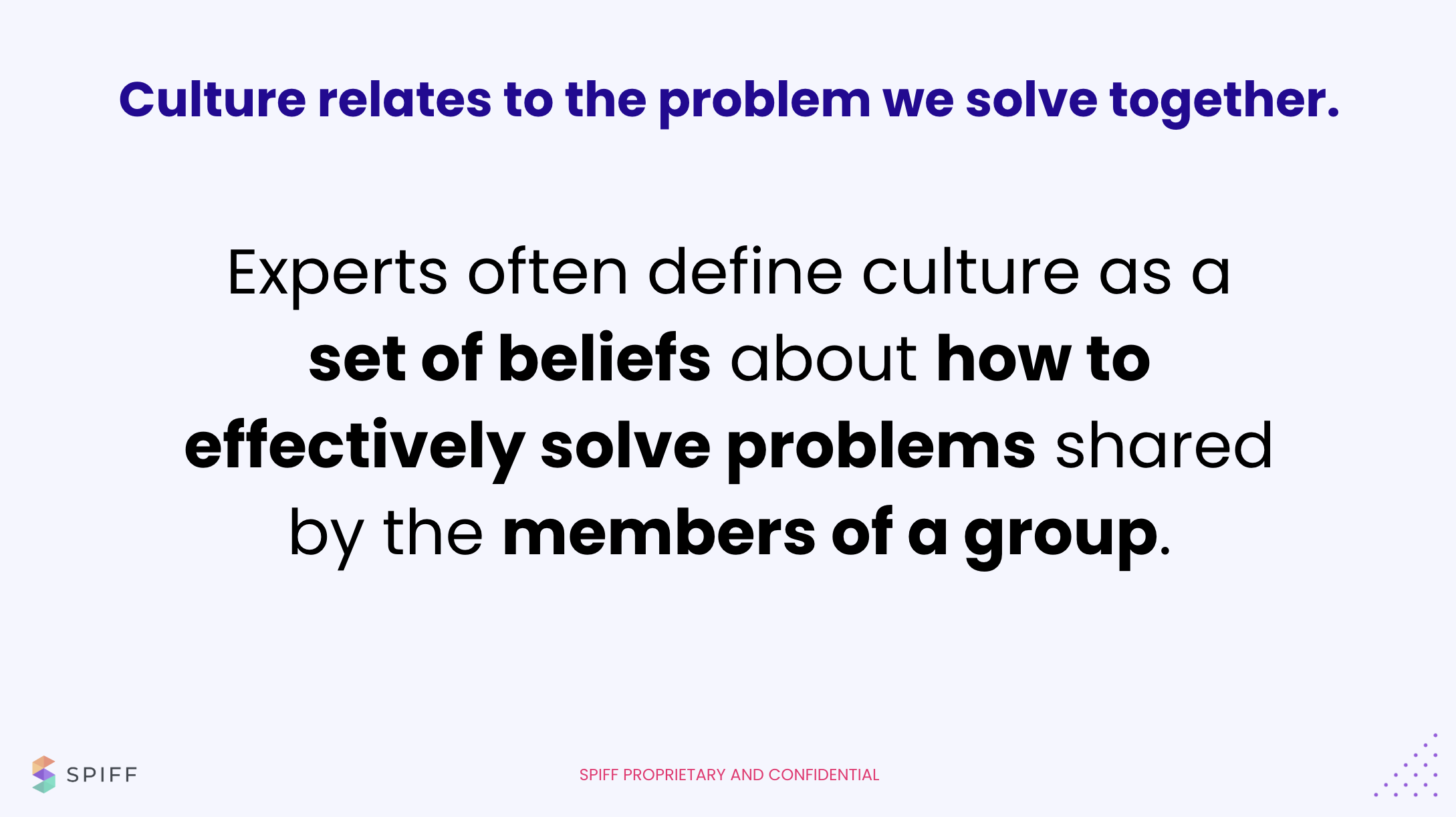
Most companies define culture as shared beliefs or values. That's not wrong—but it's incomplete.

At Spiff, we came to see culture as the relationship between three forces: our people, our customer problems, and our way of working. This link to the customer's problem is what gives culture its true shape.
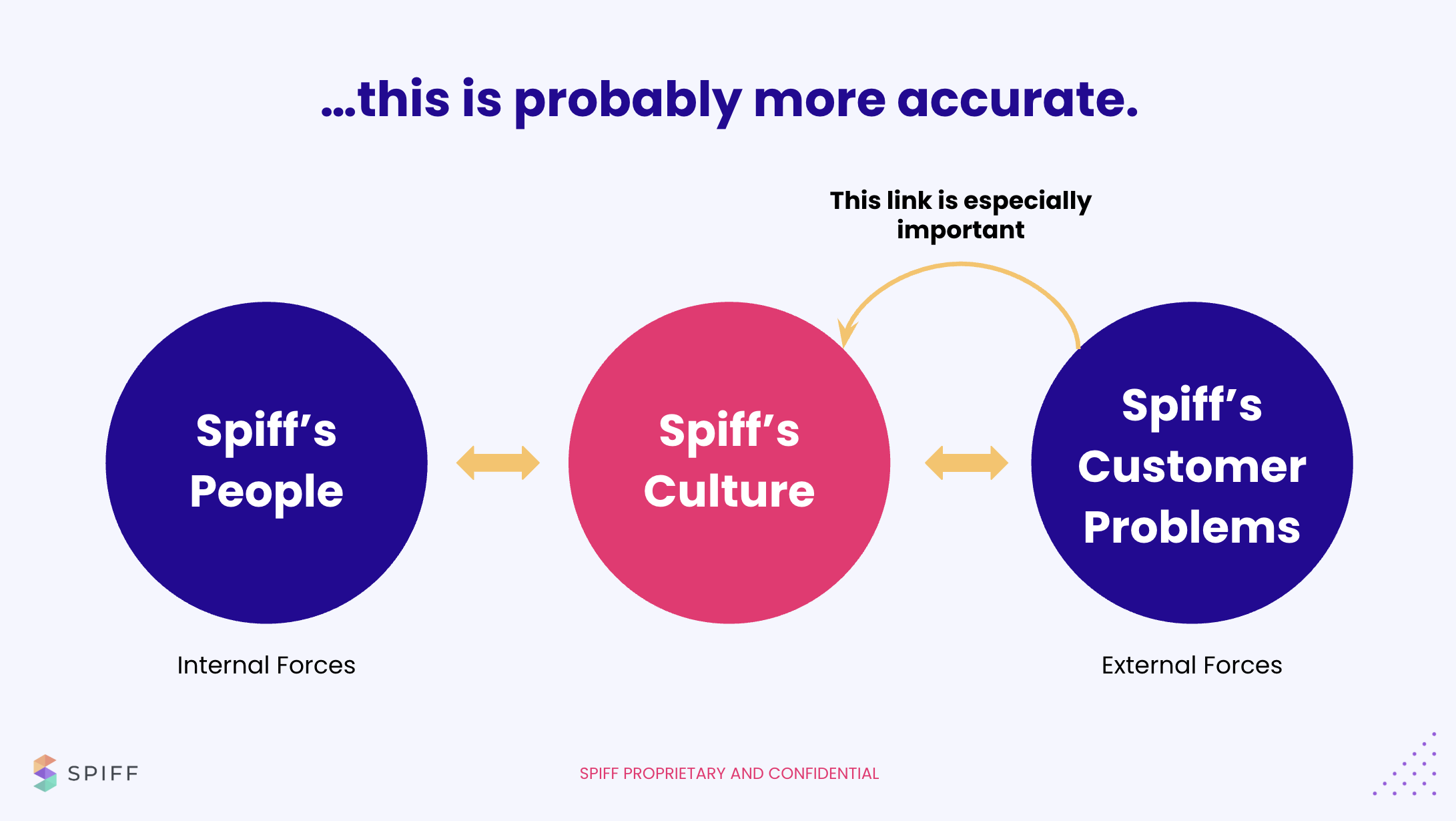
Framed this way, the purpose of our culture became obvious: to create the optimal environment for solving our customers' hardest challenges.
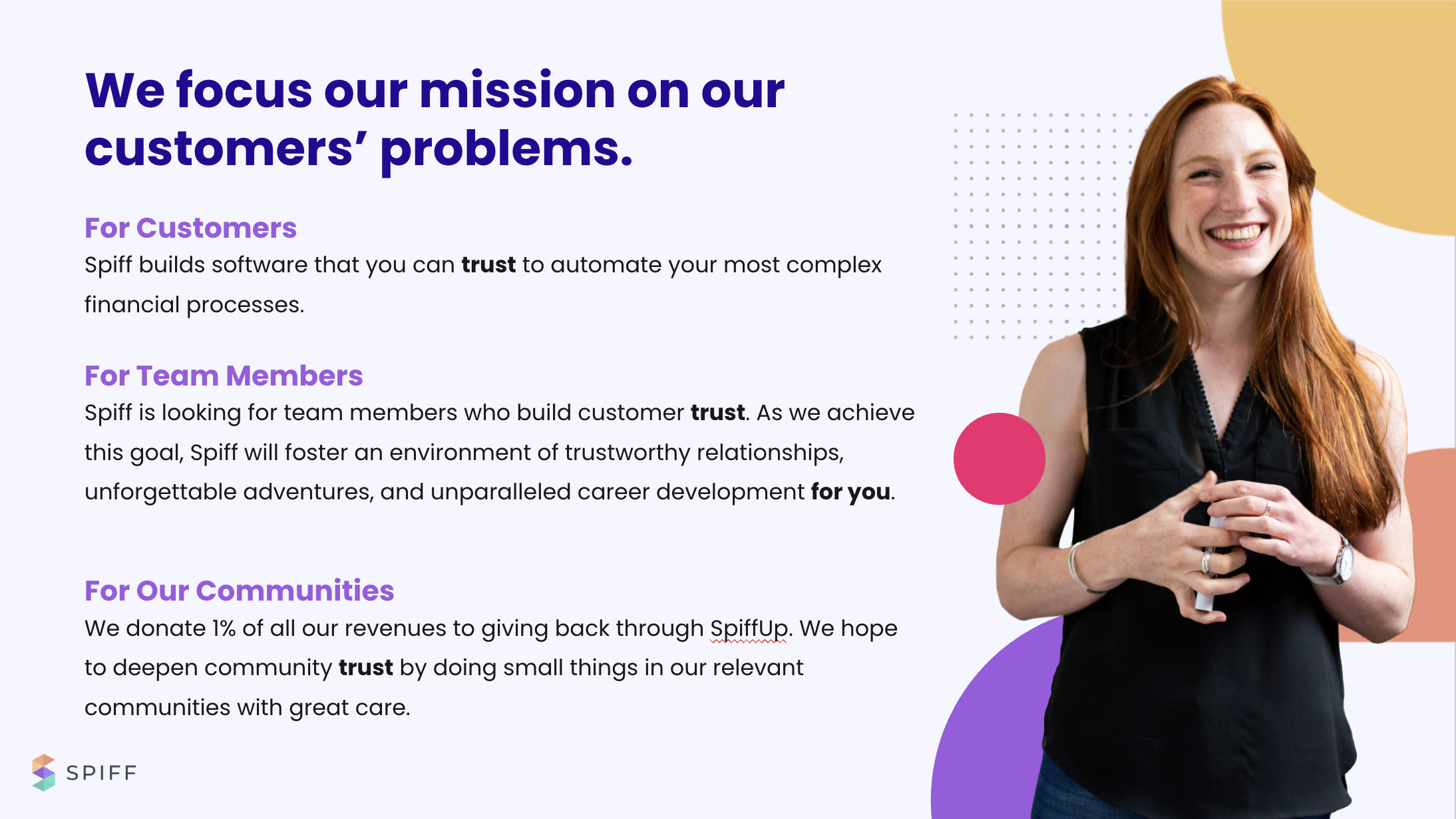
We treated culture as something practical, with a job description. Its role wasn't to decorate the company with feel-good language. Its role was to:
- Inspire our best work
- Create an environment where information wasn't spun or suppressed
- Stand for something meaningful
- Ensure work was intrinsically rewarding
- And ultimately, help us build trustworthy products that solved real customer problems
In other words, culture's job was to help us be better at our job.
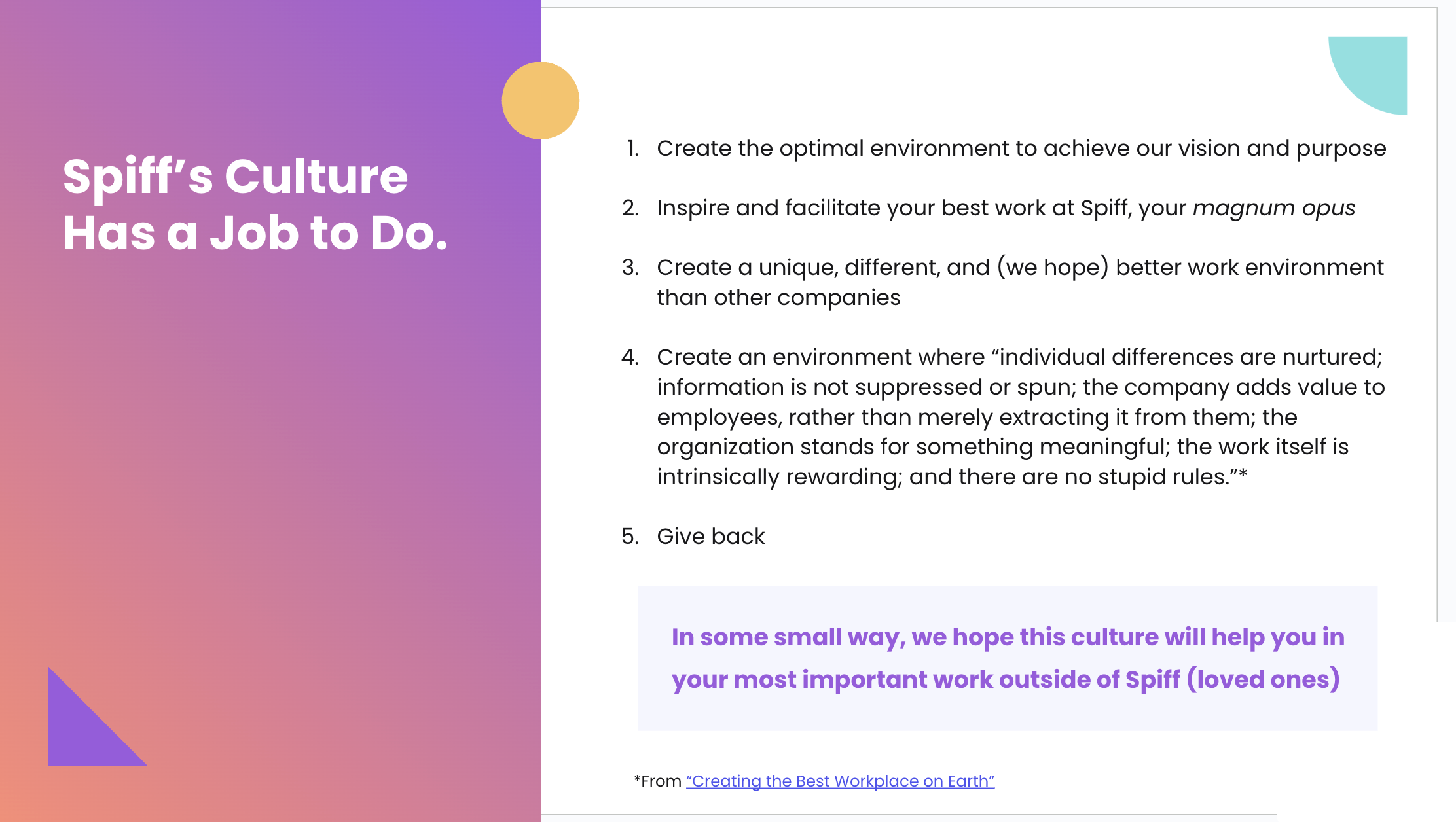
We wrestled with the idea of core values. Many companies enshrine them in stone. But we found that approach too rigid. People bring their own values to work—and that diversity is what sparks creativity, authenticity, and psychological safety.
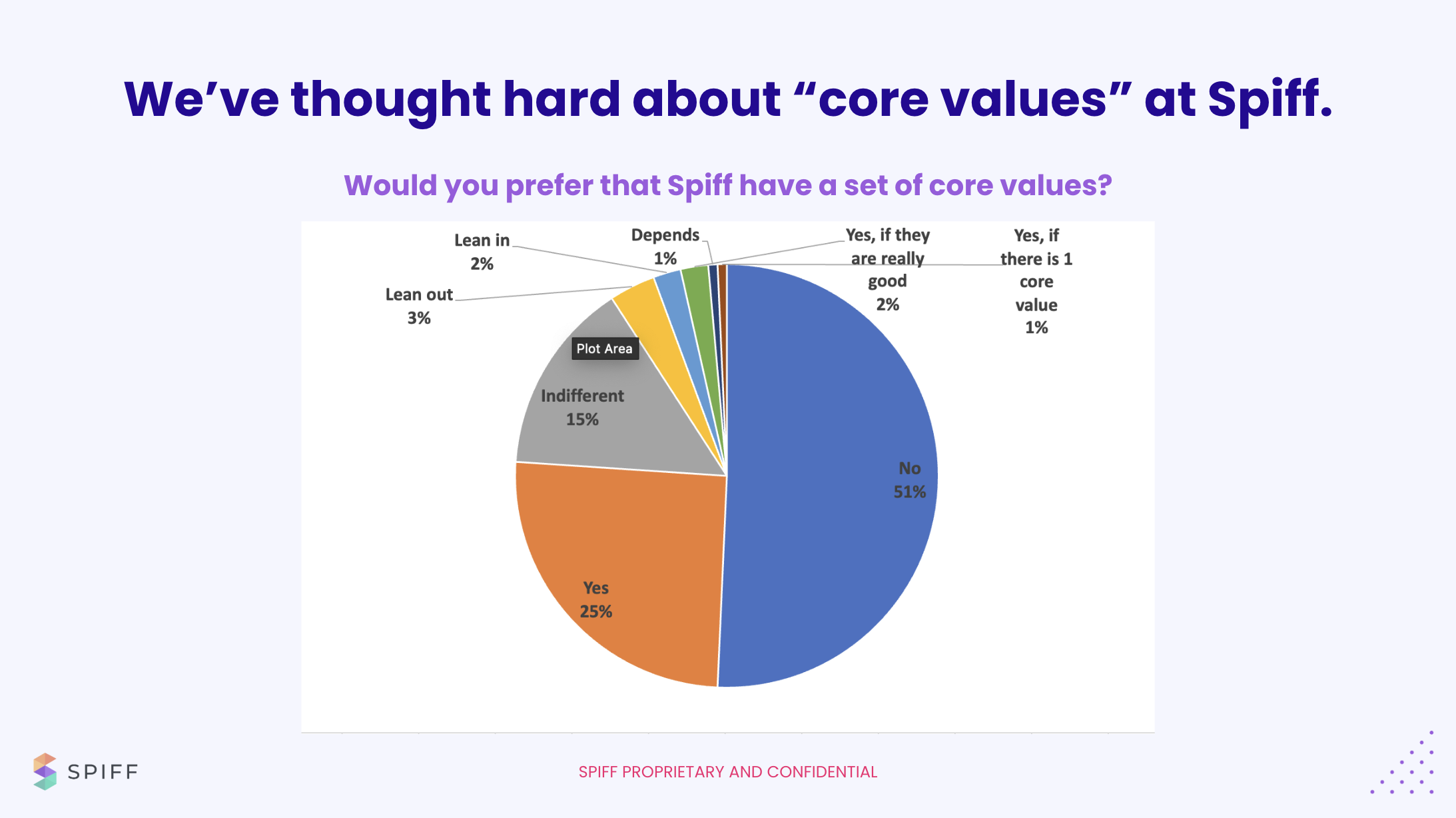
The team itself was split on the question. Some felt we needed clear values. Others felt values were irrelevant without action. Still others worried values could be weaponized and stifle diversity.
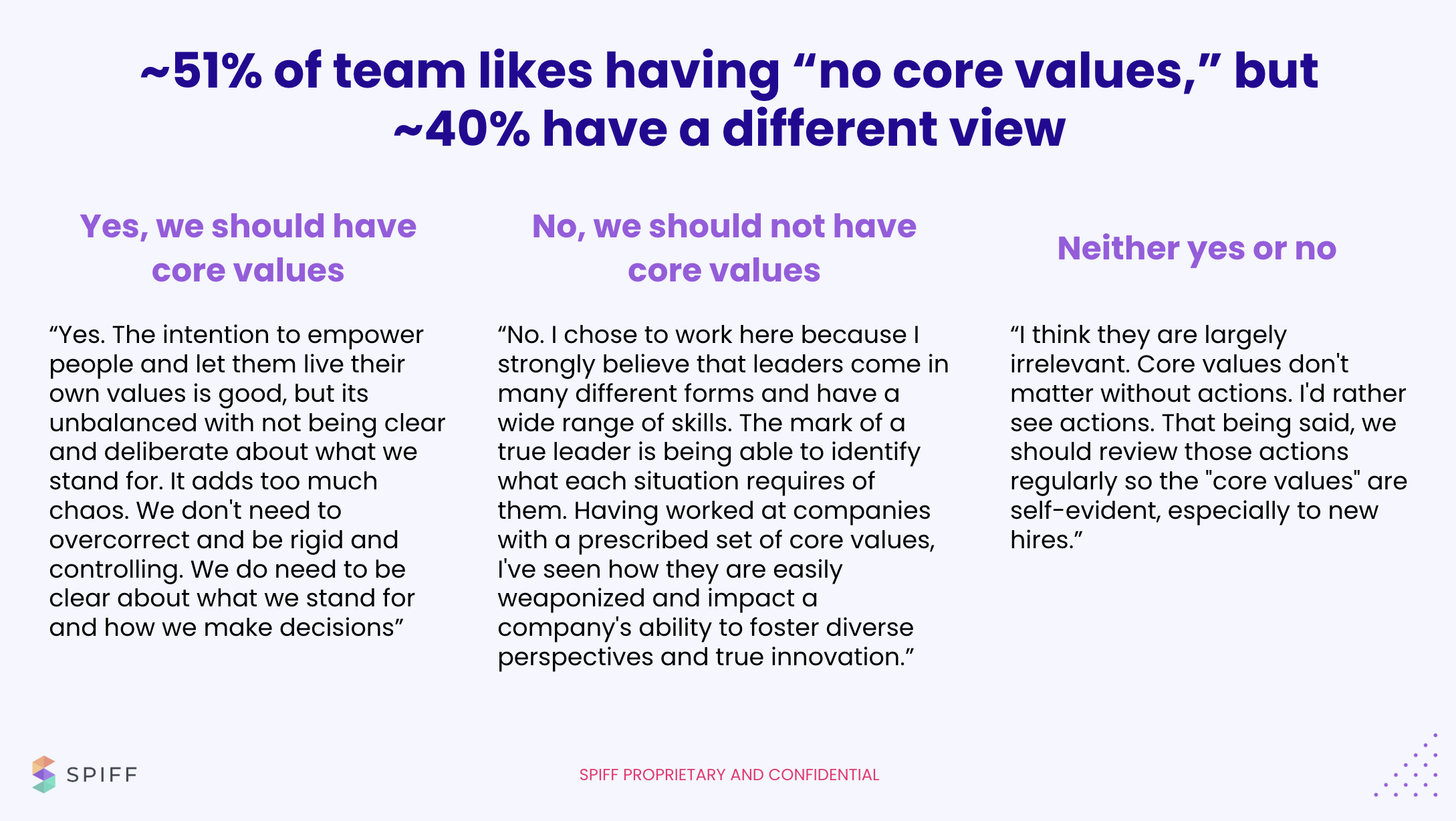
Ultimately, we couldn't get comfortable with the phrase "core values." Instead, we looked for repeated patterns of behavior that helped us solve customer problems. Actions mattered more than slogans.
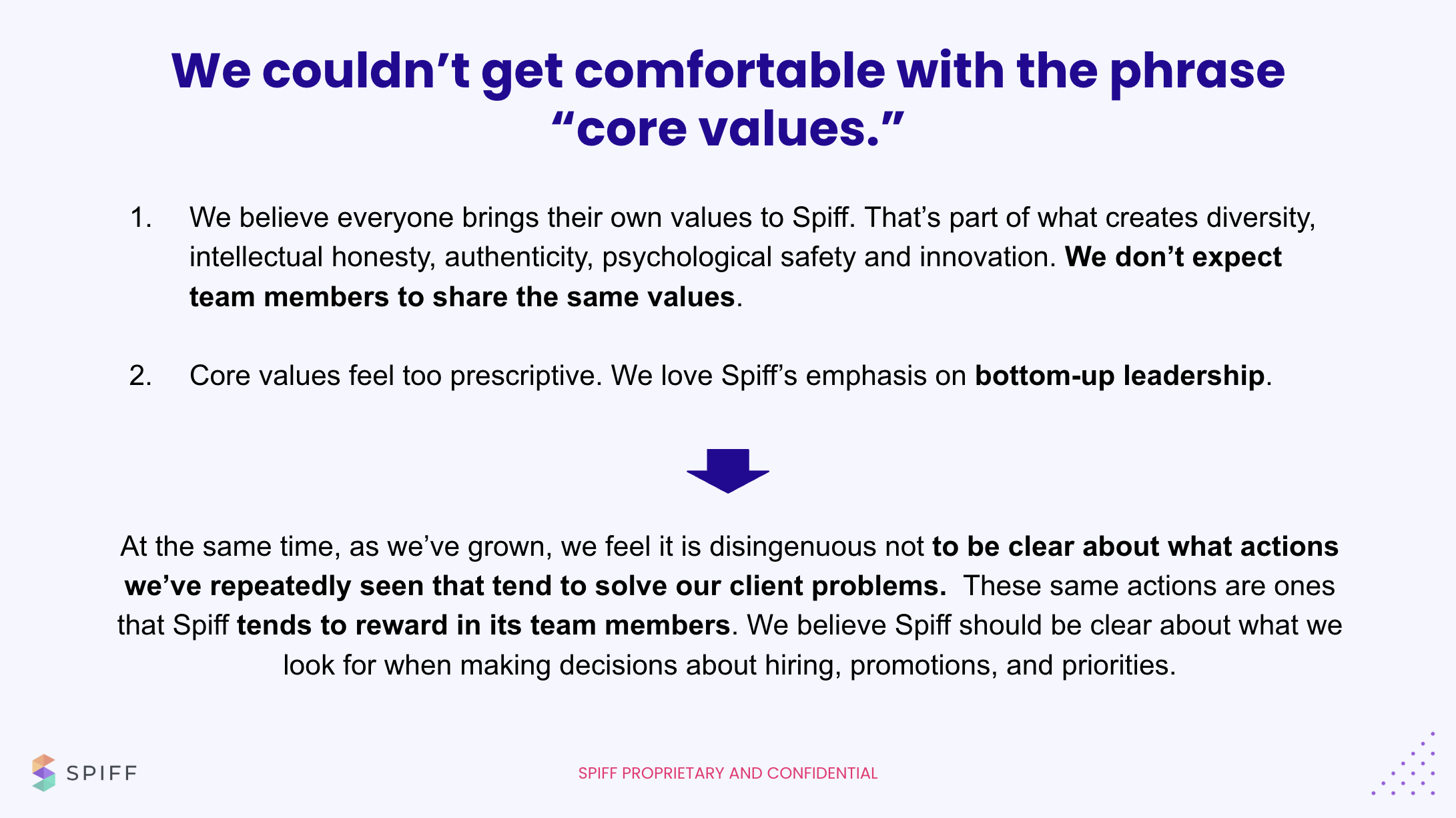
Taking a scientific approach to culture felt on-brand for Spiff. We didn't want immutable "laws," but we also knew hypotheses weren't enough. We needed something in between.
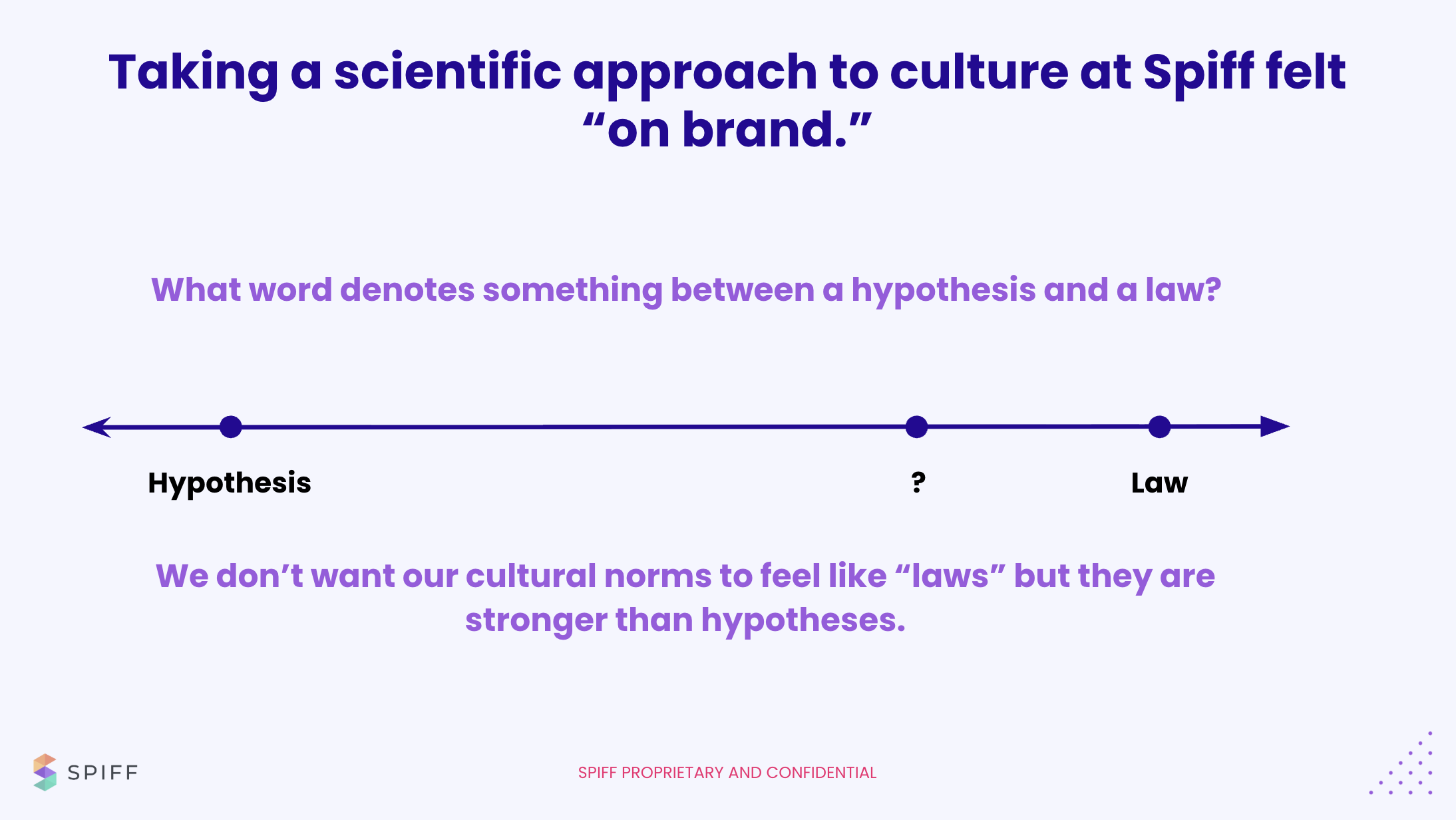
That's how we arrived at Spiff Patterns. Patterns are stronger than hypotheses, but not as rigid as laws. They are repeatable behaviors that create trust with customers and progress for the company.
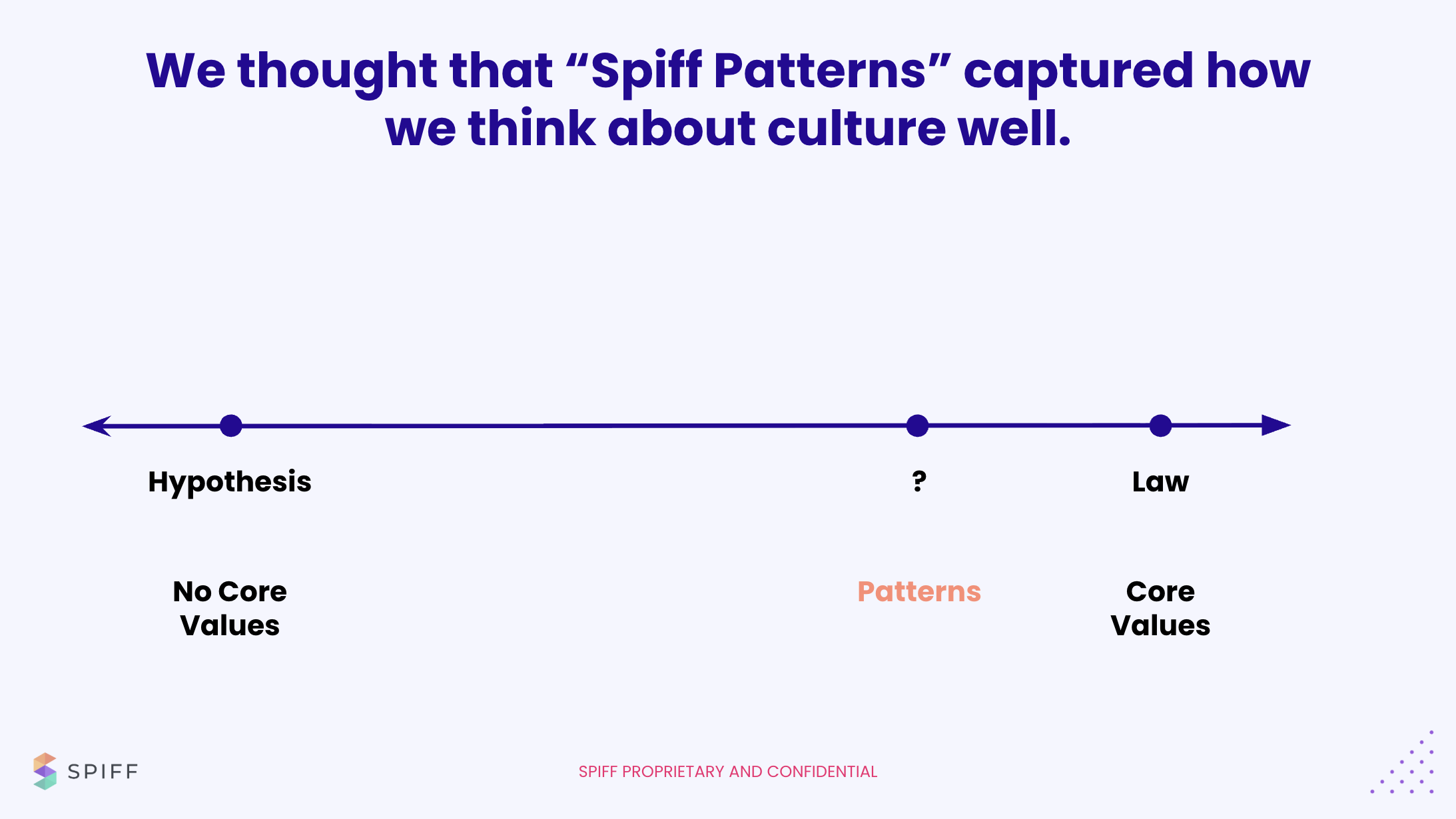
We defined eight Spiff Patterns that shaped how we worked together:
- We put customer trust first.
- We build masterpieces.
- We are prolific.
- We create an environment where the best ideas win.
- We seek diverse perspectives.
- We are reflective learners.
- We laugh along the way.
- We care as much about how we win as winning itself.
Each of these patterns ties directly back to the problem we solve for customers—automating the most complex financial processes with trust and transparency.
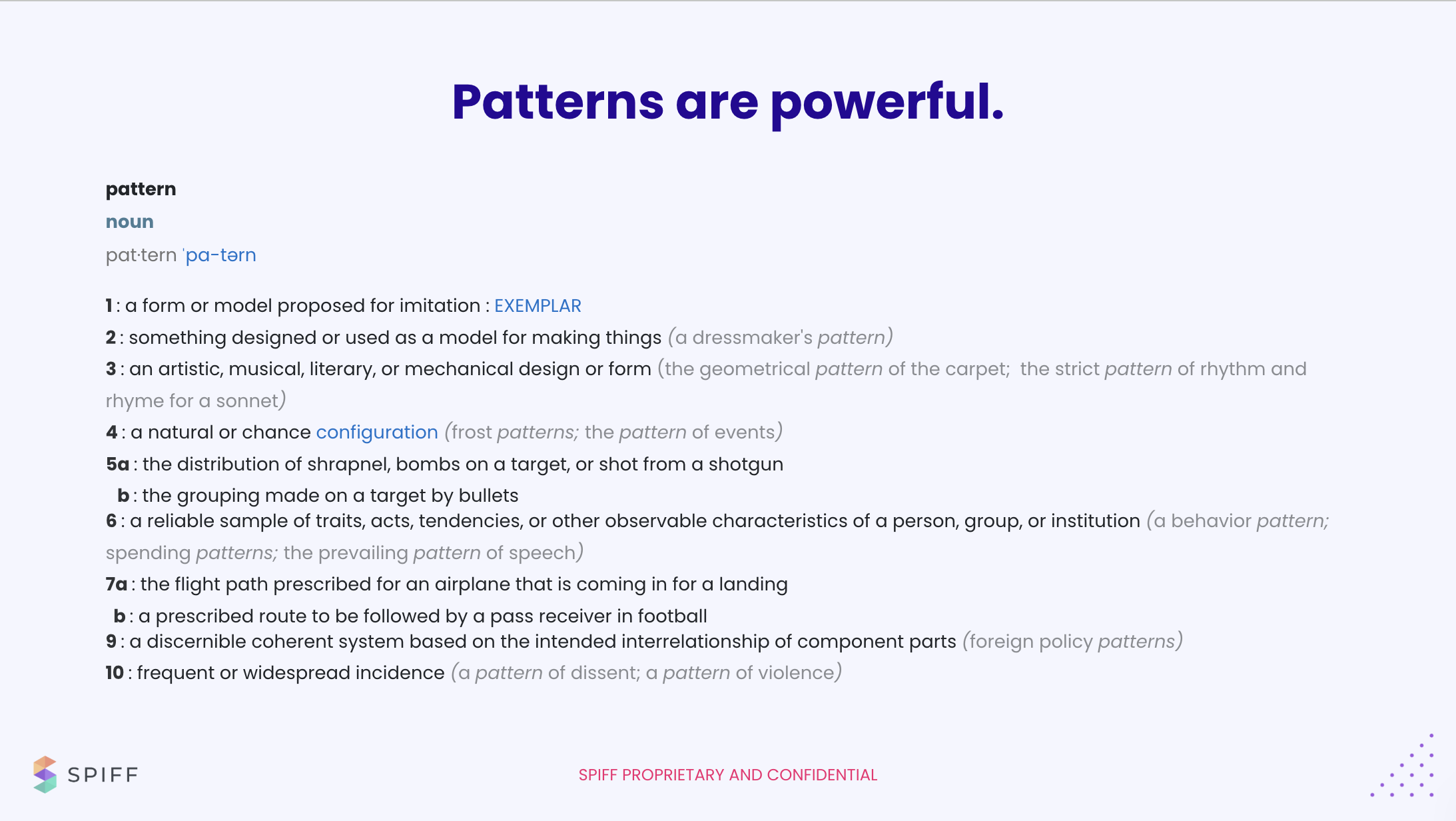
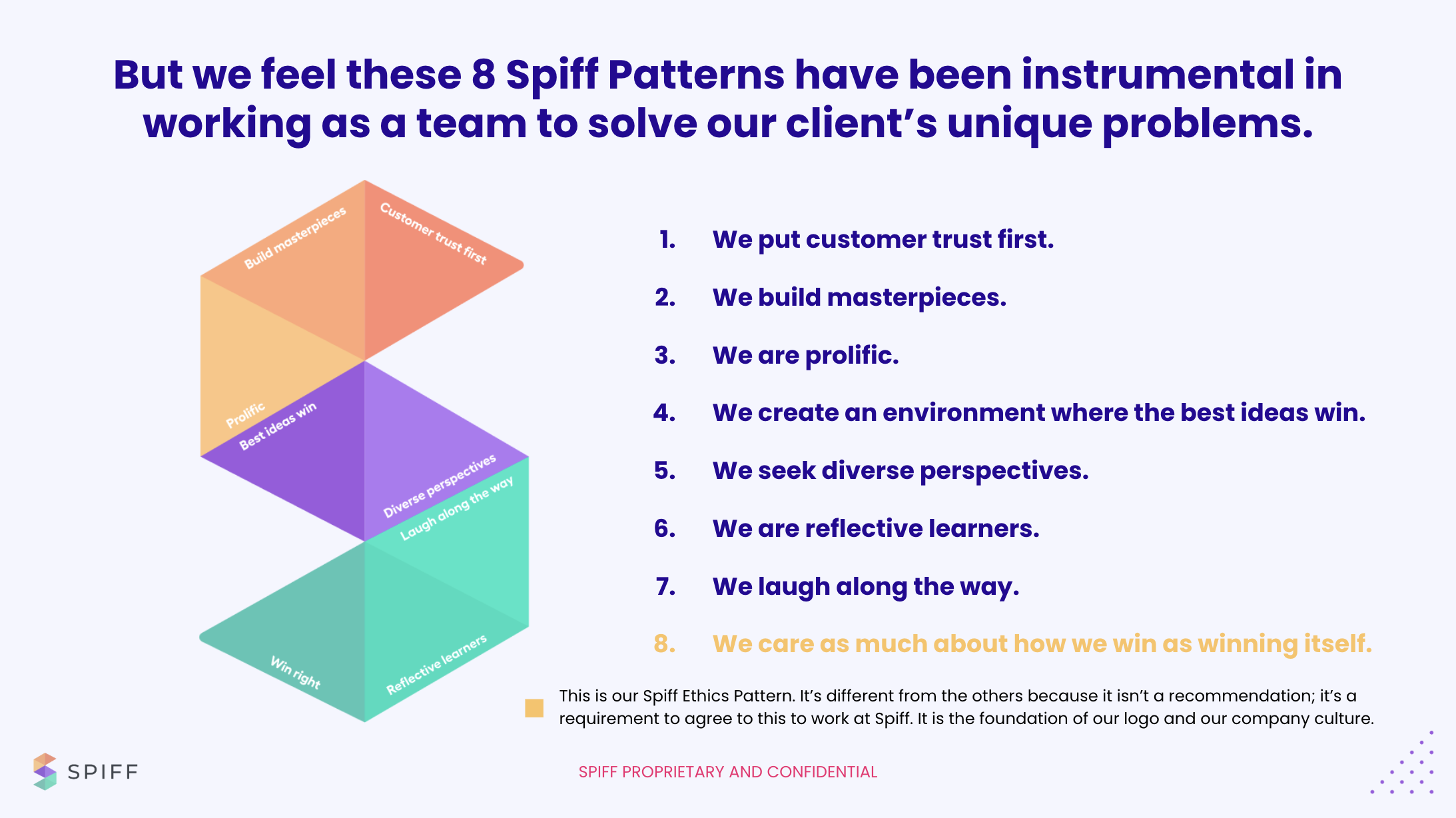
We expanded these patterns into stories, tools, and rituals. They weren't abstract words on the wall. They were embedded in the way we debated, built products, and gave feedback.
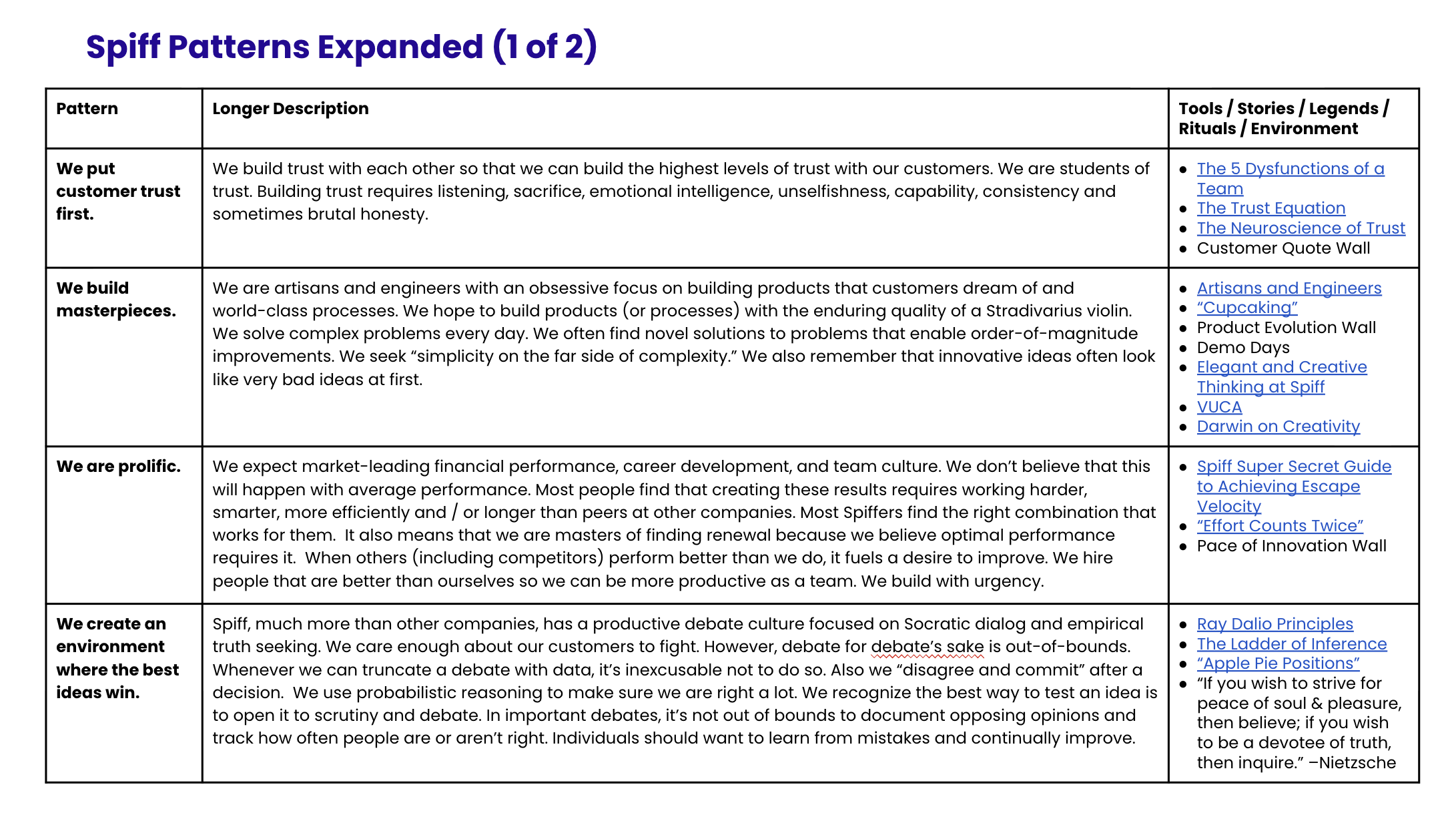
This is why we ultimately assessed every team member not by "fit," but by how much of a leader they were in achieving Spiff's mission.
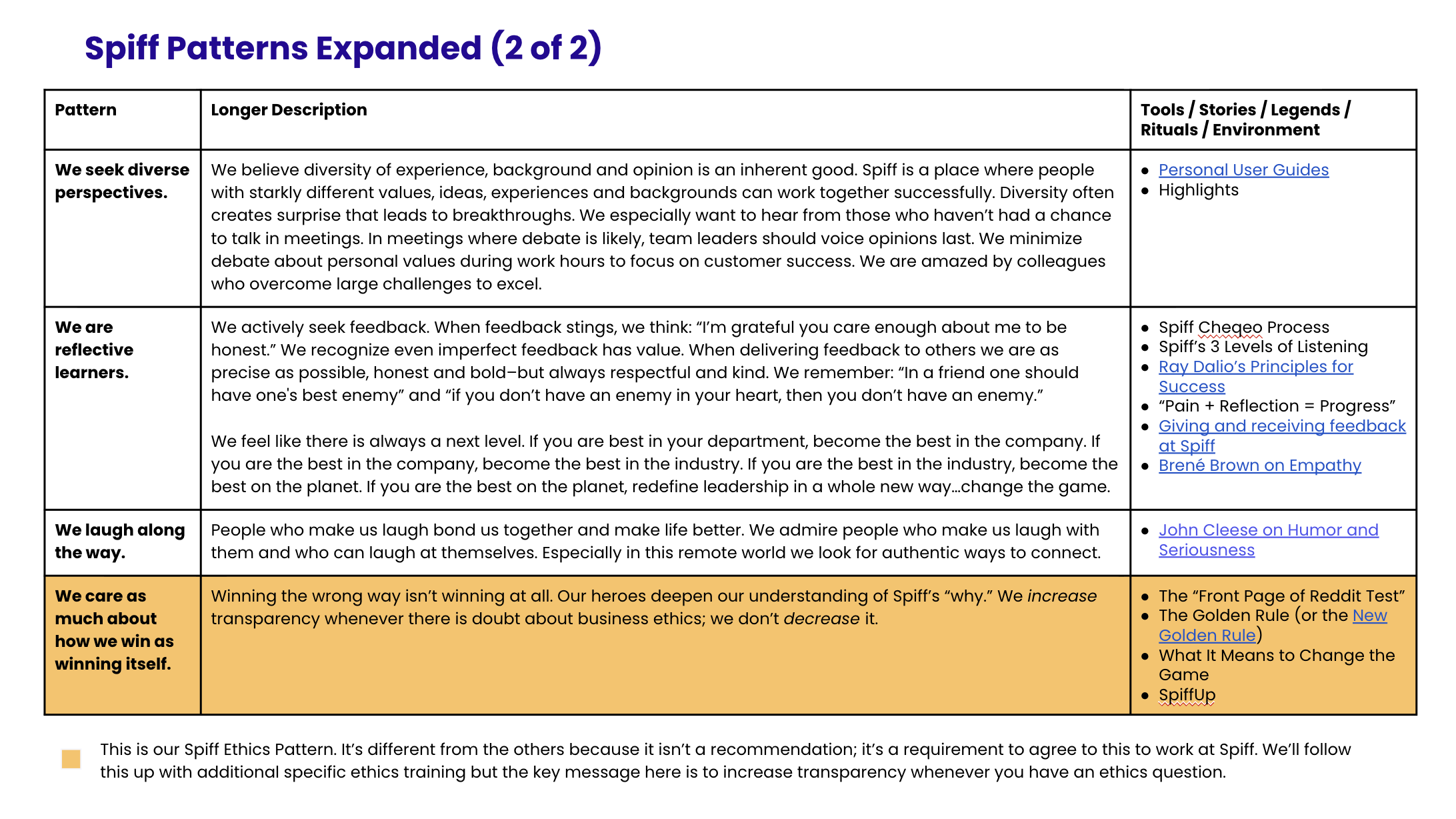
We looked for "culture adds," not "culture fits." Sometimes misfits brought the creativity and perspective that solved problems in ways we couldn't imagine otherwise.
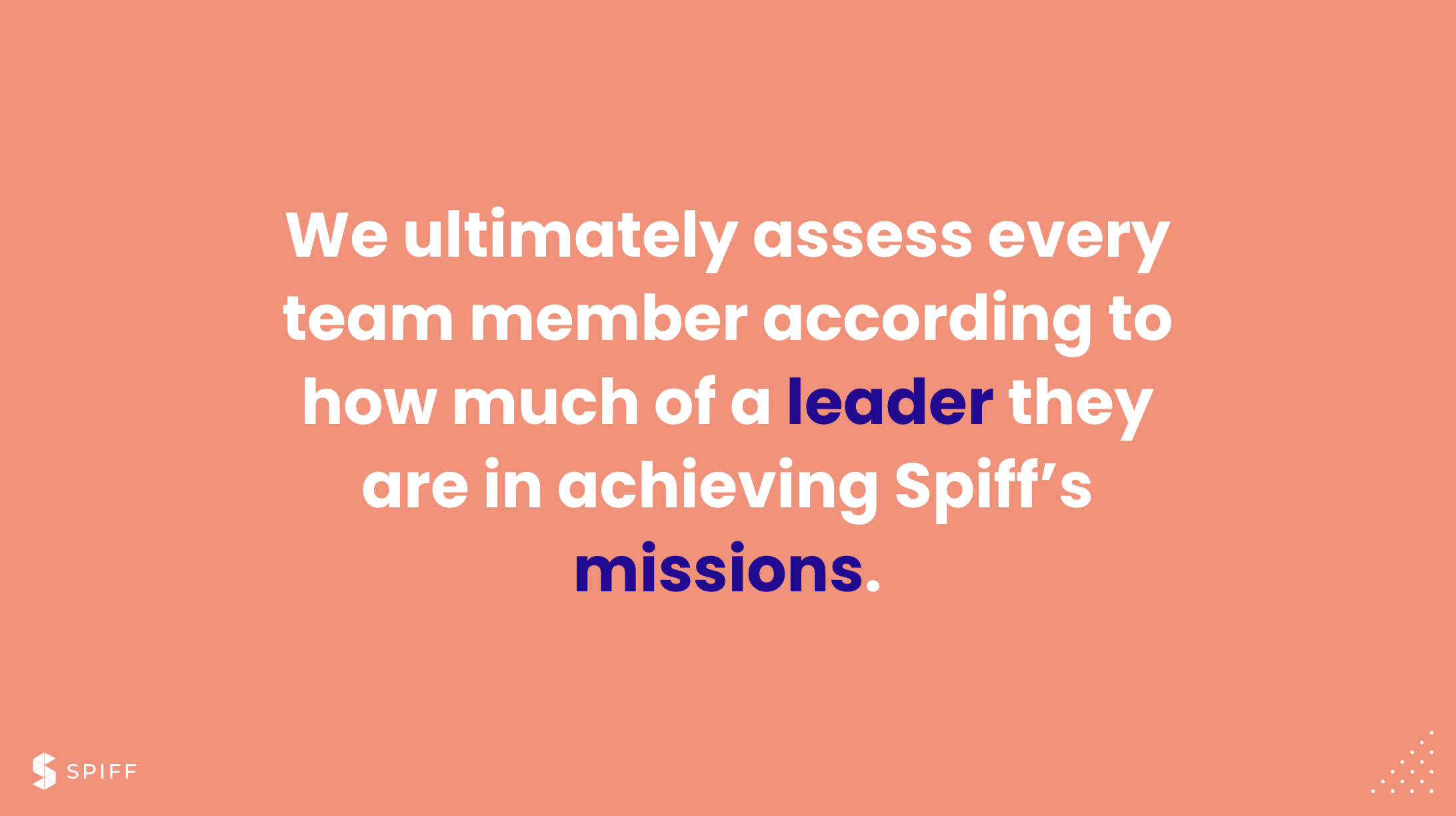
The result was a culture less about internal self-congratulation and more about external service. It shaped how we hired, how we debated, how we built software, and even how we gave back to our communities through SpiffUp.
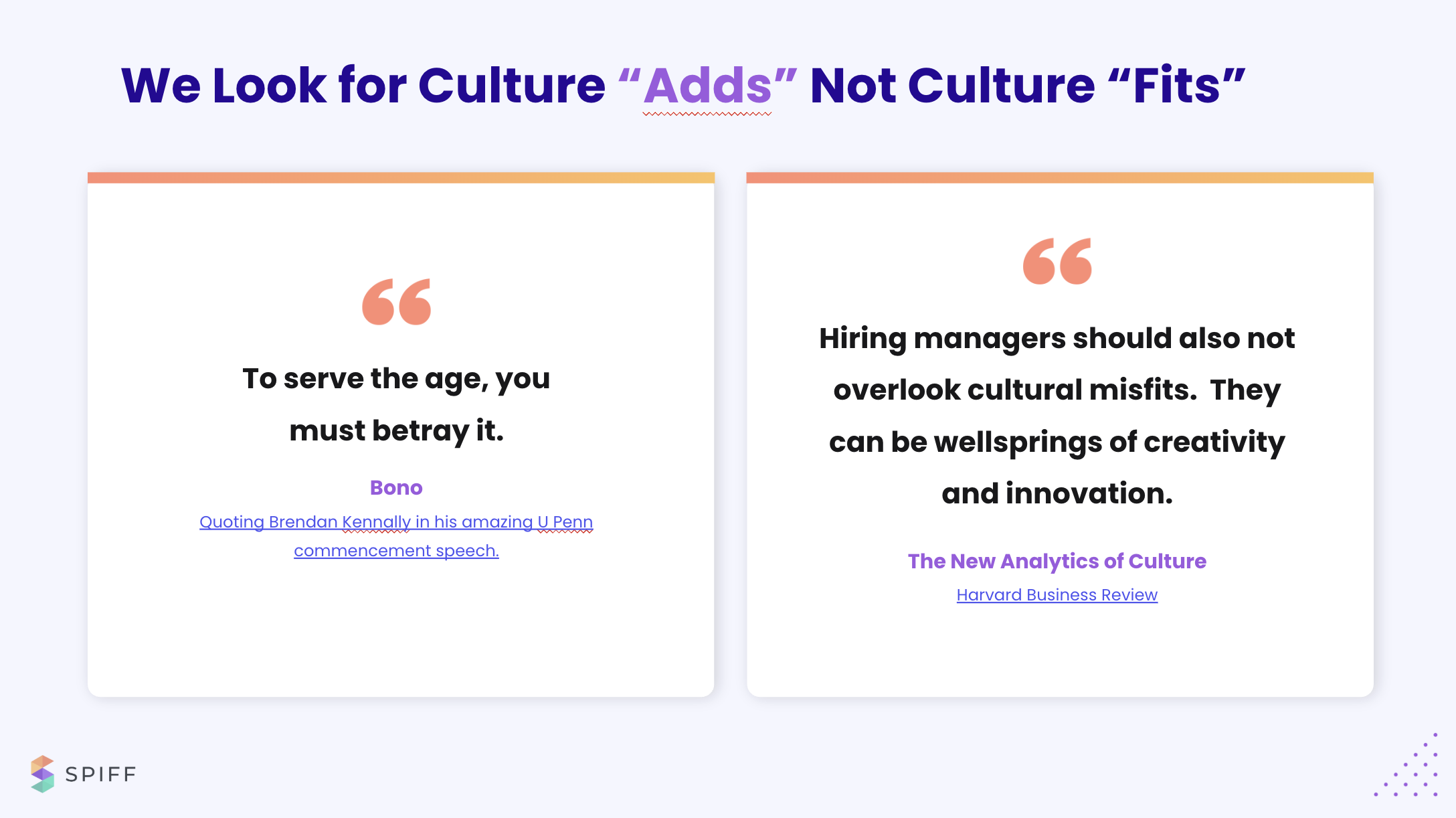
Looking back, I think Christensen's underappreciated insight deserves more recognition. Disruptive innovation taught us how industries evolve. But this other idea—culture as the collective memory of how to solve customer problems—teaches us how companies endure.
At Spiff, we didn't always get it perfect. But by rooting our culture in customer problems, we built something more lasting than slogans: a system that could flex, adapt, and scale, while always pointing toward the customer.
And in today's world of fleeting trends and fragile morale, I think that's Christensen's most enduring lesson.